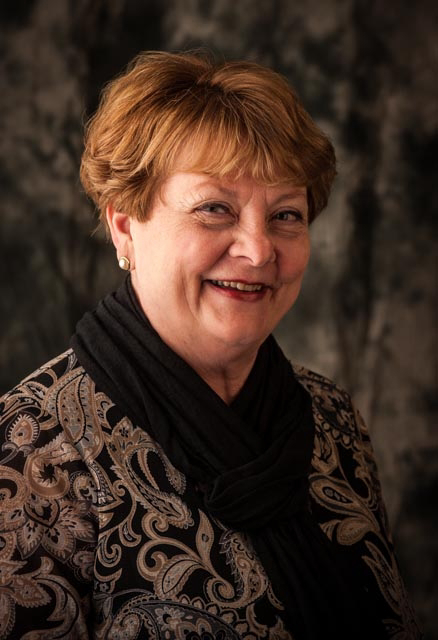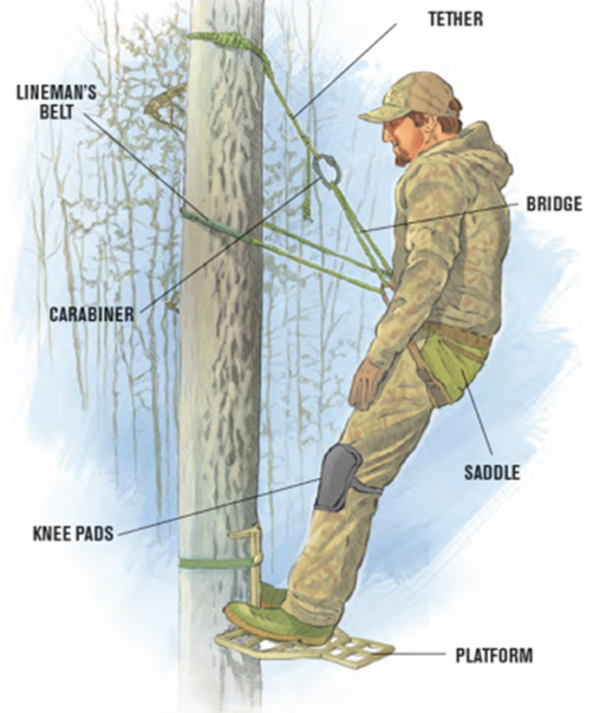
By Marilyn Bentz, NBEF Executive Director
Even though hunting saddles have been around since the 80’s, it has only been in recent years that their popularity has grown. We are easing into a new generation of hunters and hunting saddles are not your daddy’s treestand! They appear to have mass appeal to younger bowhunters that are looking for a less complex approach to hunting. They may not have the desire or time to set up typical tree stands which even in their most compact models can be cumbersome. These bowhunters also want the flexibility of hunting on public land and quickly changing locations depending on hunting conditions or traffic of other hunters or critters. The portability of hunting saddle equipment fills this need.
It may take time to get used to the decrease in platform size of a hunting saddle after being used to a traditional tree stand. Hunters may also notice fatigue in the legs and hips if they haven’t put in some preparation time. It’s recommended to gradually work up to extended tree time and to practice until feeling comfortable being suspended in the saddle and practice shooting from many angles. Bowhunters will want to check shot accuracy from many positions because hunters using a hunting saddle are facing the tree -instead of away from it like when shooting from a traditional tree stand. Shooting options may decrease until new shooting angles and effective range are established. And just like in other elevated hunting situations, if the bowhunter is ascending and questioning if they are too high, they probably are.
There are many manufacturers of hunting saddles. Each brand has slight or unique differences and therefore, may have different recommendations and brand specific instructions for their use as well as limitations such as user weight restrictions. It’s imperative to thoroughly research hunting saddle options prior to purchasing. There is one manufacturer that makes a hunting saddle and fall arrest system combo. Unless you use this particular combo hunting saddle, never use a hunting saddle as a fall arrest system in a traditional tree stand. All hunting saddles come with ropes, belts, and carabiners necessary for that particular brand of hunting saddle. Do not mix equipment from one hunting saddle manufacturer to another. Saddle hunters will also need an ascending system such as commercially manufactured ladder sections, climbing sticks, etc. Just as in traditional tree stand usage, screw in tree steps or lineman’s spikes are notrecommended.
Bowhunters are very aware that elevated stand hunting comes with risks. Hunting saddles do not eliminate these risks. According to Tree Stand Safety Awareness Foundation President Glen Mayhew, in the past few years most recorded incidents have occurred from either disconnecting from the tree for some reason while elevated or modifying the saddle and the modification failed. Risks can be reduced by always following manufacturers’ guidelines and instructions. Become familiar with hunting saddle terminology and with the saddle itself at ground level. Get in the habit of inspecting the hunting saddle for any signs of wear or damage every time before putting it on. And just as in other elevated stand hunting situations, a saddle hunter should be attached to the tree before leaving the ground and until back down. Avoid choosing dead trees when using a hunting saddle or traditional tree stands. Select trees that are straight and appear viable. Avoid using a hunting saddle if the weather conditions are icy, rainy, or if surfaces appear slick or if lightning exists in the area. Always use a haul line when raising or lowering equipment. Never climb with equipment or wear clothing that could interfere with the safe operation of a hunting saddle. Bowhunters shouldn’t use a hunting saddle when feeling ill or if taking medications which could affect balance.
Hunting saddles are definitely here to stay and may help attract some new hunters. Regardless of your means or equipment used for hunting, be safe and continue to make great memories.
Marilyn Bentz is the Executive Director for the National Bowhunter Education Foundation (NBEF). The NBEF has been a long-time leader in promoting safety for hunting from an elevated position. The NBEF works diligently with stakeholders to ensure the latest and ultimate safety information reaches the consumer regarding elevated stand safety.
